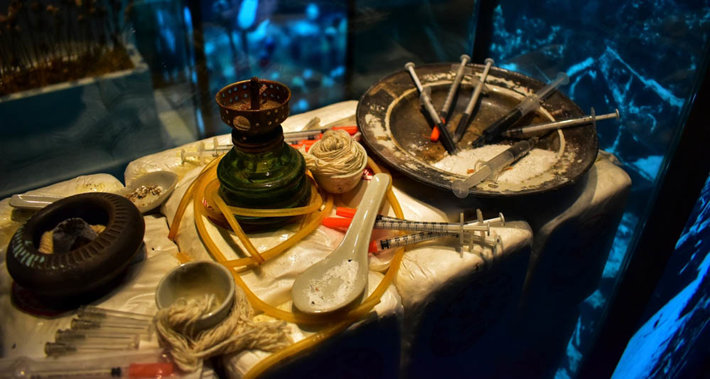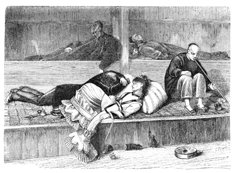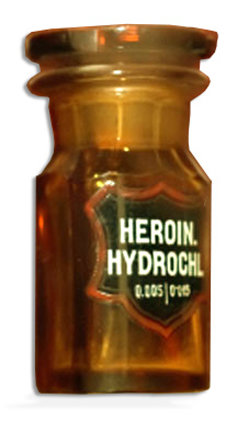History of Heroin

Heroin, abuse of which has become an epidemic in the U.S in recent years, is not a new drug that just showed up in the late 1960’s, nor are its negative effects unique to modern times. Heroin is an opium derivative and, as with any of the opium derivatives, there is a severe physical/mental dependency that develops when heroin is abused.
The Birth of the American Heroin Addict
In the mid to late 1800’s, opium was a fairly popular drug. Opium dens were scattered throughout what we know today as the wild west. The opium influx during this period was due in large part to the drug being brought into the country via Chinese immigrants who came here to work on the railroads.

Accurate American history tells us that famous names of the period like Wild Bill Hickock and Kit Carson actually frequented opium dens more often than saloons. The stereotyped picture we have of the cowhand bellying up to the bar drinking whiskey straight after a long hard ride on the dusty trail is only part of the story of the old west. Oftentimes the cowhand was not belly up to a bar at all. He was in a prone position in a dim candle-lit room smoking opium in the company of an oriental prostitute. It was not uncommon for some of these cowhands to spend several days and nights at a time in these dens in a constant dream-state, eventually becoming physically addicted to the drug.
Nonetheless, it was true that alcoholism was a bigger problem. Alcoholism was one of the major sources of violence and death during this period. Eventually, however, opium was promoted as a cure for alcoholism by the late 1800’s.
It was from opium that morphine, a derivative, was developed as a painkiller in approximately 1810. It was considered a wonder drug because it eliminated severe pain associated with medical operations or traumatic injuries. It left the user in a completely numb euphoric dream-state. Because of the intense euphoric side effects, the drug in 1811 was named after the Greek god of dreams, Morpheus, by Dr. F.W.A. Serturner, a German pharmacist. By the mid-1850’s, morphine was available in the United States and became more and more popular with the medical profession. The benefits of using the drug to treat severe pain was considered nothing short of remarkable to doctors of the time. Unfortunately, the addictive properties of the drug, on the flip side, went virtually unnoticed until after the Civil War.

During the Civil War the numbers of people exposed to morphine in the course of being treated for their war-related injuries sky-rocketed. Tens of thousands of Northern and Confederate soldiers became morphine addicts.
In just over 10 years time from its arrival into this country, the United States was plagued with a major morphine epidemic. Even though no actual statistics were kept on addiction at this time, the problem had grown to large enough proportions to raise serious concerns from the medical profession. Doctors became perplexed and were completely in the dark as to how to treat this new epidemic.
By 1874 the answer to this increasing problem was thought to be found in the invention of a new drug in Germany. This new wonder drug was called Heroin, after its German trademarked name. Heroin was imported into the United States shortly after it was invented. The sales pitch that created an instant market of American doctors and their morphine-addicted patients was that heroin was a “safe, non-addictive” substitute for morphine.
Hence, the heroin addict was born and has been present in American culture ever since.

From the late 1800’s to the early 1900’s the reputable drug companies of the day began manufacturing over-the-counter drug kits. These kits contained a glass barreled hypodermic needle and vials of opiates (morphine or heroin) and/or cocaine packaged neatly in attractive engraved tin cases. Laudanum (opium in an alcohol base) was also a very popular elixir that was used to treat a variety of ills. Laudanum was administered to kids and adults alike - as freely as aspirin is used today.
There were of course marketing and advertising campaigns launched by the drug companies producing this product that touted these narcotics as the cure for all types of physical and mental ailments ranging from alcohol withdrawal to cancer, depression, sluggishness, coughs, colds, tuberculosis and even old age. Most of the elixirs pitched by the old “snake oil salesmen” in their medicine shows contained one or more of these narcotics in their mix.
Heroin, morphine and other opiate derivatives were unregulated and sold legally in the United States until 1920 when Congress recognized the danger of these drugs and enacted the Dangerous Drug Act. This new law made over-the-counter purchase of these drugs illegal and deemed that their distribution be federally regulated. By the time this law was passed, however, it was already too late. A market for heroin in the U.S. had been created. By 1925 there were an estimated 200,000 heroin addicts in the country. It was a market which would persist to this day.
Related article: Heroin Today
See also: Heroin Addiction | Heroin Drug Info | Heroin / Methadone Info | Heroin Timeline
 ®
®